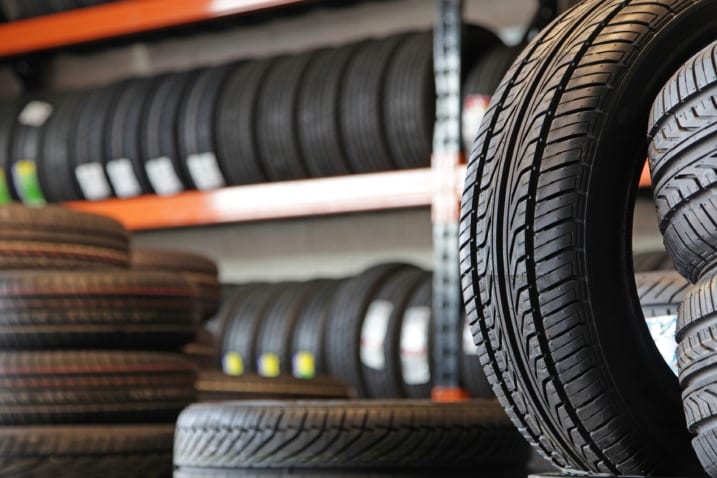Tread-life warranties
Every tire manufacturer offers tread-life warranties. Nearly every tire has a mileage estimate (the exceptions being some high-performance tires, track/competition tires and most winter tires). The tread-life estimate is based on the type of tire and the number of miles that can be expected under normal driving conditions, Margadonna says. For example, high-performance tires found on a sports car are softer and have a lower mileage estimate than the harder tires typically found on an economy car.
If a tire has worn out evenly across the tread well before its estimated mileage limit, it may qualify for replacement under the tread-life warranty. You must show proof of purchase and proof that the tires were rotated properly at the recommended intervals. In this situation, the manufacturer prorates the cost of the new tire based on the percentage of remaining tread on the old tire and the price of the replacement tire.
Margadonna says this prorating method is similar to how companies reimburse owners under car battery warranties. He uses the example of a tire with an 80,000-mile warranty and a person who was only able to get 70,000 miles of life out of it. "You haven't reached the mileage threshold that we think you should have reached, so we owe you 10,000 miles," he says.
Even so, Tirerack.com notes that consumers have to go on driving with potentially compromised tire performance or safety before they can make a warranty claim because manufacturers won't consider replacement until the tires are worn down to the 2/32nds tread-wear indicator.
Some notable exceptions to tread-life warranties are winter tires and vehicles that use different size tires in the front and rear. Michelin is one of the only manufacturers to have a tread-life warranty on winter tires. Owners must remove the tires during the off-season to ensure proper use and keep the warranty in good standing. "We want them to be on in the fall, around October 1, and off in the spring, around April 1," says Margadonna. "If not, we reserve the right to void that warranty claim."
Some sports cars have different-size tires that cannot be rotated using the traditional method. In split-size fitments like this, rear tires get half the mileage warranty of the front tires. That's because the rear tires wear out almost twice as fast as the fronts, Margadonna says.
Road hazard warranties
Tire stores typically offer these warranties, which come into play if, for example, you get a flat tire from a nail, screw or other sharp, penetrating object. If the tire can be repaired, the repair is covered for the duration of the warranty. If the tire can't be repaired, the company will prorate the remaining mileage toward the purchase of a new tire. Some companies even throw in free tire rotations for the duration of the warranty.
Road hazard warranty prices vary based on the tire and the vendor, but on average, they range from $10 to $20 per tire. Edmunds editors have mixed feelings about them. Some have put them to use, while others think that they are a waste of money.
The warranties are a major source of profit for tire shops, but that doesn't necessarily mean they don't have value to drivers. These warranties are essentially insurance policies. If you're considering whether to buy a road hazard warranty, think about how many times you've had a nail or a puncture in your tire in the last few years. Was the amount you spent on repair or replacement enough to justify the warranty? Do you drive in an area where there is a lot of debris on the road? Or are you just the kind of person who feels better when you buy the extended warranty on a product? If your answer to any of those questions is a yes, these warranties might be worth your money.
Some manufacturers, including Continental and Kumho, offer road hazard warranties on their tires. It's typically limited to one year of coverage.
Workmanship and materials warranty
The workmanship and materials warranty protects the consumer from any defects in the manufacturing or materials used in the tire. Most manufacturers offer this coverage for the life of the tire. If a blowout occurs due to a manufacturing defect, for example, it would be covered under warranty. This typically requires an inspection from the manufacturer, which, as you might imagine, leaves a warranty claim open to some interpretation. Some defects, however, are fairly obvious.
"Workmanship and materials means that we stand behind the product should you run into some issue," says Margadonna. Some of the problems that would be covered include severe cracking in the sidewall or the loss of a block of tread. "If there was something wrong with the tire that we were at fault for, as a manufacturer, we stand behind our product," says Margadonna.
If a workmanship or manufacturing failure comes up within the first 2/32nds of an inch of tread, most manufacturers will replace the tire for free. Anything after that will usually bring a prorated amount.
Manufacturer special warranty
A manufacturer's special warranty typically takes the form of a 30-day promotional trial. This is the best time to determine whether the tires you just bought are right for you. Consumers are eligible for a full refund or credit toward the purchase of another tire if they are not satisfied with their tires for any reason. Bridgestone, General Tire, Michelin and Yokohama are just a few of the manufacturers that offer these trial programs.
In March 2011, Michelin launched its Michelin Promise Plan, which Margadonna says is unique in the industry. This warranty program currently has three components: a 60-day satisfaction guarantee, a limited mileage warranty and flat-tire changing assistance.
The flat-tire changing assistance makes the program stand out from its competitors. If customers have a flat tire and do not know how to change it, or just do not want to do it themselves, they can call a toll-free number and roadside assistance will install the spare free of charge. If the customer has no spare, Michelin will arrange for a tow to the nearest Michelin-approved repair center for up to 150 miles.
Uniformity warranty
The uniformity warranty is one that a driver might never encounter. This warranty covers excessive vibration or ride disturbance caused by a tire. For most companies, the buyer has to notify the company within the first 2/32nds of an inch of tire tread.
A problem like that would be "instantaneous" and very obvious to a driver, Margadonna says. "So we tend not to cover ride issues well into the life of the tire."
In most circumstances, a uniformity problem would be covered under the 30-day manufacturer's special warranty, but the uniformity clause is there to protect the consumer against problems that happen past that.
What voids your warranty?
Just as you can void your car's warranty, you can void your tire's warranty, too. The big one to watch out for is improper maintenance. If the tire manufacturer does not see proof that the tires were inflated, rotated and aligned properly, chances are your warranty claim will be denied. Other warranty killers include vandalism, racing, off-roading and damage from snow chains.
Inflate, rotate, evaluate
With any warranty, the manufacturer expects you to do your part to maintain the product to its standards. The Bridgestone tire manual, for example, tells consumers to do these three things to ensure long tire life:
- Keep your tires inflated to the recommended tire pressure to ensure even wear.
- Rotate the tires based on the manufacturer's recommendation or every 5,000 miles, keeping a record of the service.
- Inspect your tires periodically, looking for any bumps or inconsistent wear patterns.
Don't cut corners on safety
These warranties may seem like too much to keep track of, but if you take a few basic precautions, you'll not only reduce the chances of a tire wearing out prematurely but you'll also be fully prepared for a claim. Hang onto your purchase receipt and keep a record of all tire rotations and alignments. Keep in mind that it is better to miss out on a warranty claim than to run the tire to the end of its tread life and compromise your safety.


 by
by 
